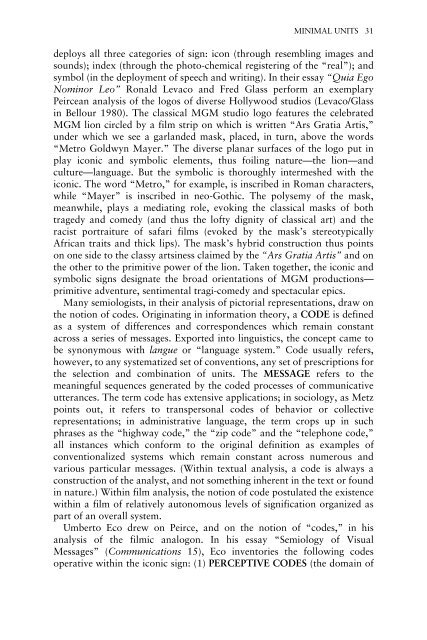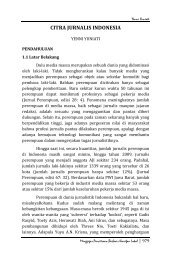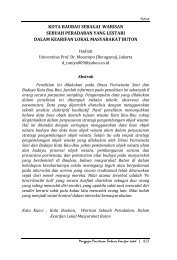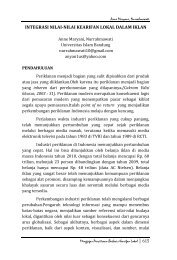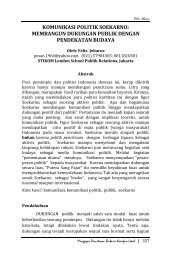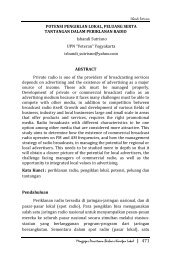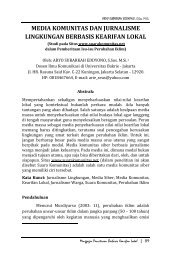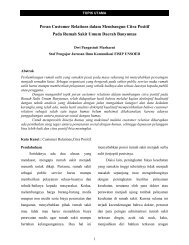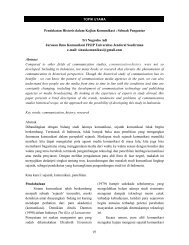New Vocabularies in Film Semiotics
New Vocabularies in Film Semiotics
New Vocabularies in Film Semiotics
You also want an ePaper? Increase the reach of your titles
YUMPU automatically turns print PDFs into web optimized ePapers that Google loves.
MINIMAL UNITS 31<br />
deploys all three categories of sign: icon (through resembl<strong>in</strong>g images and<br />
sounds); <strong>in</strong>dex (through the photo-chemical register<strong>in</strong>g of the “real”); and<br />
symbol (<strong>in</strong> the deployment of speech and writ<strong>in</strong>g). In their essay “Quia Ego<br />
Nom<strong>in</strong>or Leo” Ronald Levaco and Fred Glass perform an exemplary<br />
Peircean analysis of the logos of diverse Hollywood studios (Levaco/Glass<br />
<strong>in</strong> Bellour 1980). The classical MGM studio logo features the celebrated<br />
MGM lion circled by a film strip on which is written “Ars Gratia Artis,”<br />
under which we see a garlanded mask, placed, <strong>in</strong> turn, above the words<br />
“Metro Goldwyn Mayer.” The diverse planar surfaces of the logo put <strong>in</strong><br />
play iconic and symbolic elements, thus foil<strong>in</strong>g nature—the lion—and<br />
culture—language. But the symbolic is thoroughly <strong>in</strong>termeshed with the<br />
iconic. The word “Metro,” for example, is <strong>in</strong>scribed <strong>in</strong> Roman characters,<br />
while “Mayer” is <strong>in</strong>scribed <strong>in</strong> neo-Gothic. The polysemy of the mask,<br />
meanwhile, plays a mediat<strong>in</strong>g role, evok<strong>in</strong>g the classical masks of both<br />
tragedy and comedy (and thus the lofty dignity of classical art) and the<br />
racist portraiture of safari films (evoked by the mask’s stereotypically<br />
African traits and thick lips). The mask’s hybrid construction thus po<strong>in</strong>ts<br />
on one side to the classy arts<strong>in</strong>ess claimed by the “Ars Gratia Artis” and on<br />
the other to the primitive power of the lion. Taken together, the iconic and<br />
symbolic signs designate the broad orientations of MGM productions—<br />
primitive adventure, sentimental tragi-comedy and spectacular epics.<br />
Many semiologists, <strong>in</strong> their analysis of pictorial representations, draw on<br />
the notion of codes. Orig<strong>in</strong>at<strong>in</strong>g <strong>in</strong> <strong>in</strong>formation theory, a CODE is def<strong>in</strong>ed<br />
as a system of differences and correspondences which rema<strong>in</strong> constant<br />
across a series of messages. Exported <strong>in</strong>to l<strong>in</strong>guistics, the concept came to<br />
be synonymous with langue or “language system.” Code usually refers,<br />
however, to any systematized set of conventions, any set of prescriptions for<br />
the selection and comb<strong>in</strong>ation of units. The MESSAGE refers to the<br />
mean<strong>in</strong>gful sequences generated by the coded processes of communicative<br />
utterances. The term code has extensive applications; <strong>in</strong> sociology, as Metz<br />
po<strong>in</strong>ts out, it refers to transpersonal codes of behavior or collective<br />
representations; <strong>in</strong> adm<strong>in</strong>istrative language, the term crops up <strong>in</strong> such<br />
phrases as the “highway code,” the “zip code” and the “telephone code,”<br />
all <strong>in</strong>stances which conform to the orig<strong>in</strong>al def<strong>in</strong>ition as examples of<br />
conventionalized systems which rema<strong>in</strong> constant across numerous and<br />
various particular messages. (With<strong>in</strong> textual analysis, a code is always a<br />
construction of the analyst, and not someth<strong>in</strong>g <strong>in</strong>herent <strong>in</strong> the text or found<br />
<strong>in</strong> nature.) With<strong>in</strong> film analysis, the notion of code postulated the existence<br />
with<strong>in</strong> a film of relatively autonomous levels of signification organized as<br />
part of an overall system.<br />
Umberto Eco drew on Peirce, and on the notion of “codes,” <strong>in</strong> his<br />
analysis of the filmic analogon. In his essay “Semiology of Visual<br />
Messages” (Communications 15), Eco <strong>in</strong>ventories the follow<strong>in</strong>g codes<br />
operative with<strong>in</strong> the iconic sign: (1) PERCEPTIVE CODES (the doma<strong>in</strong> of


